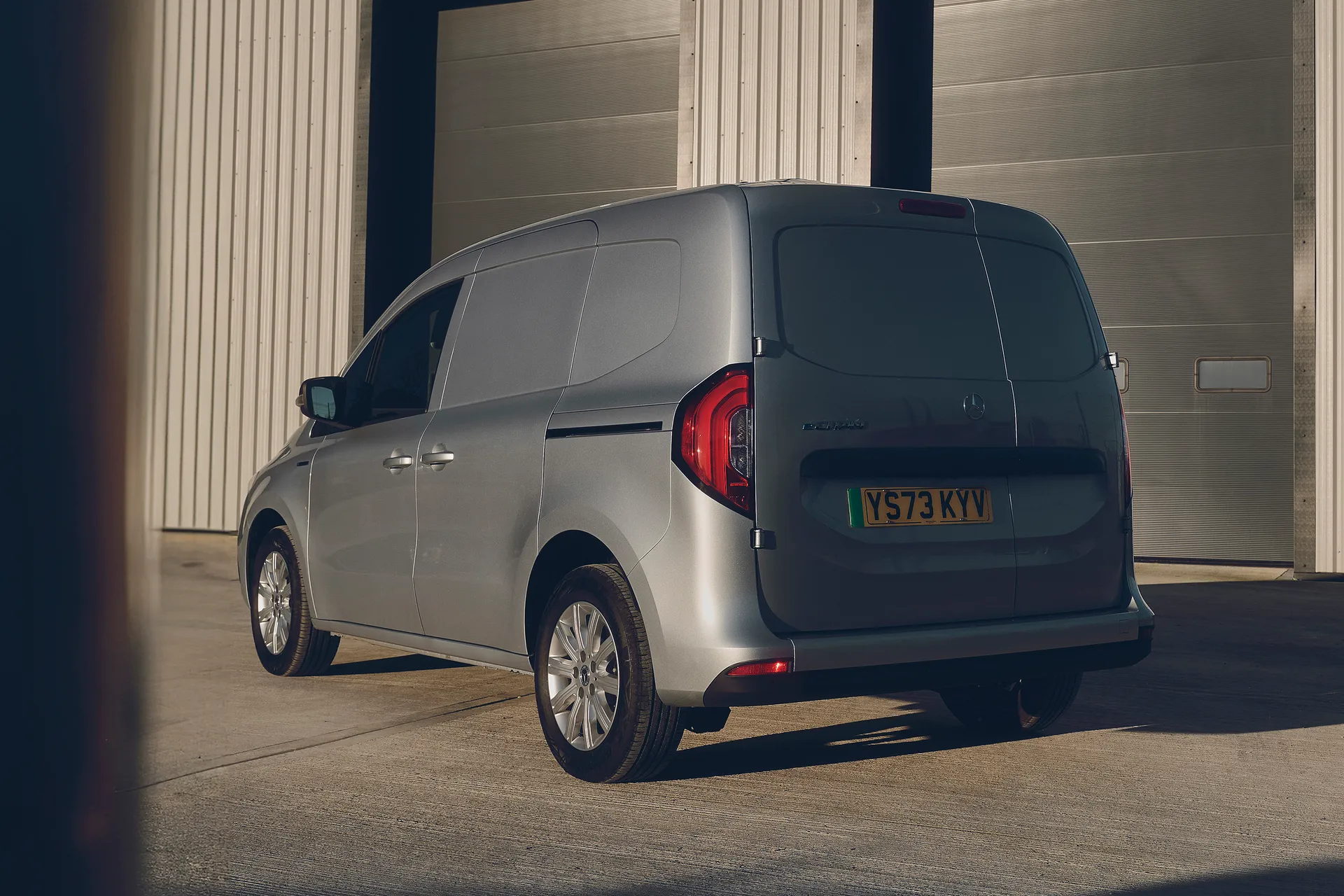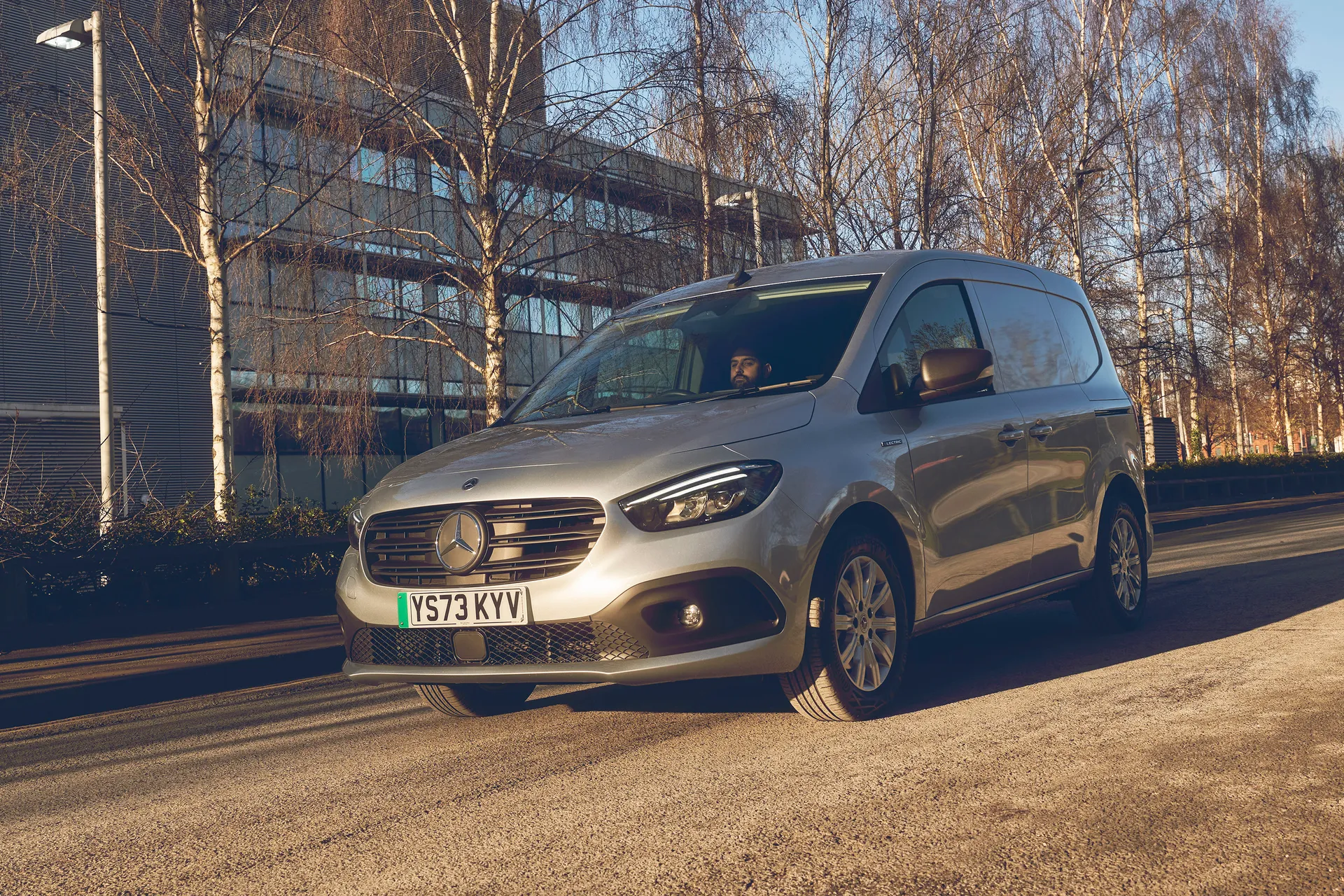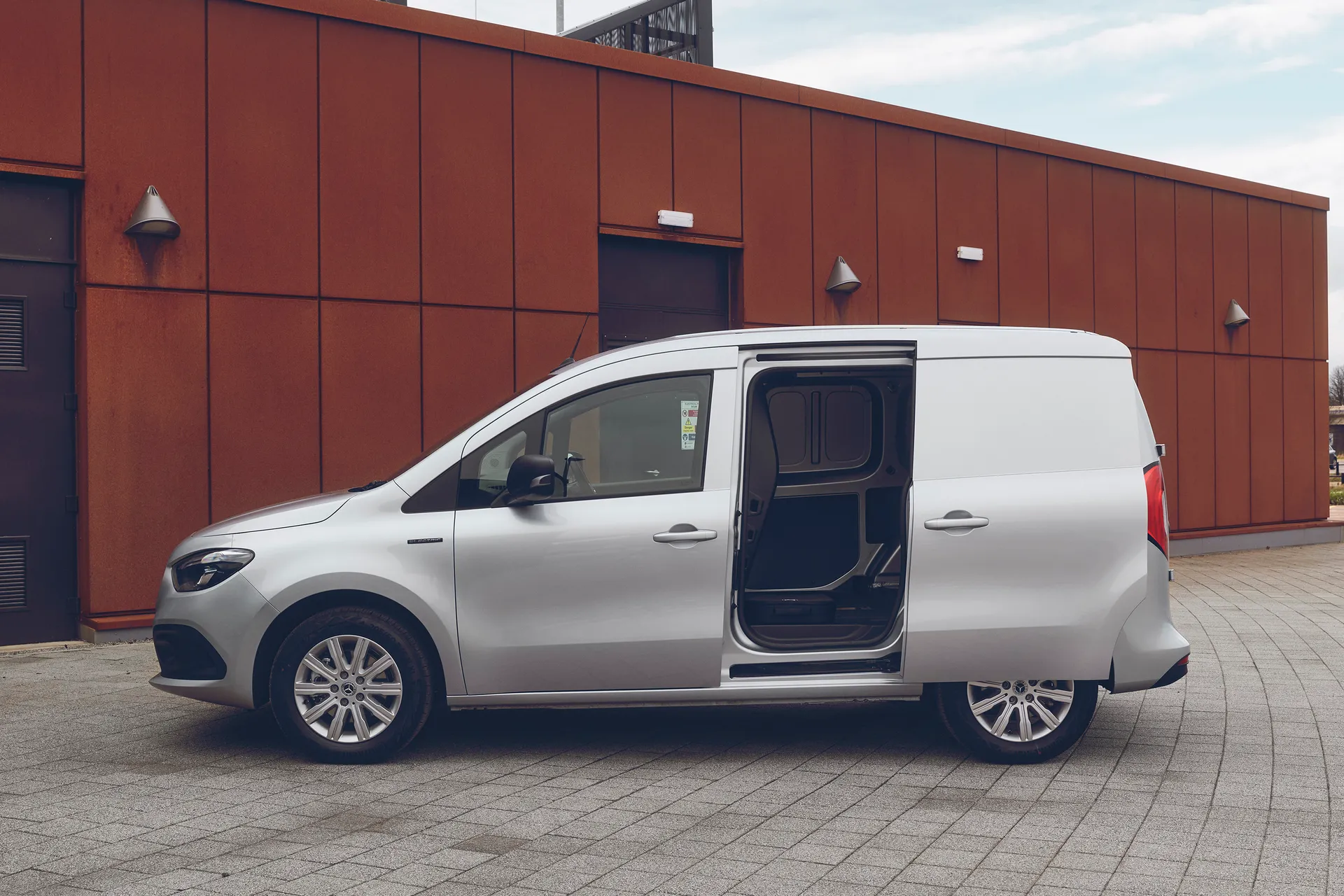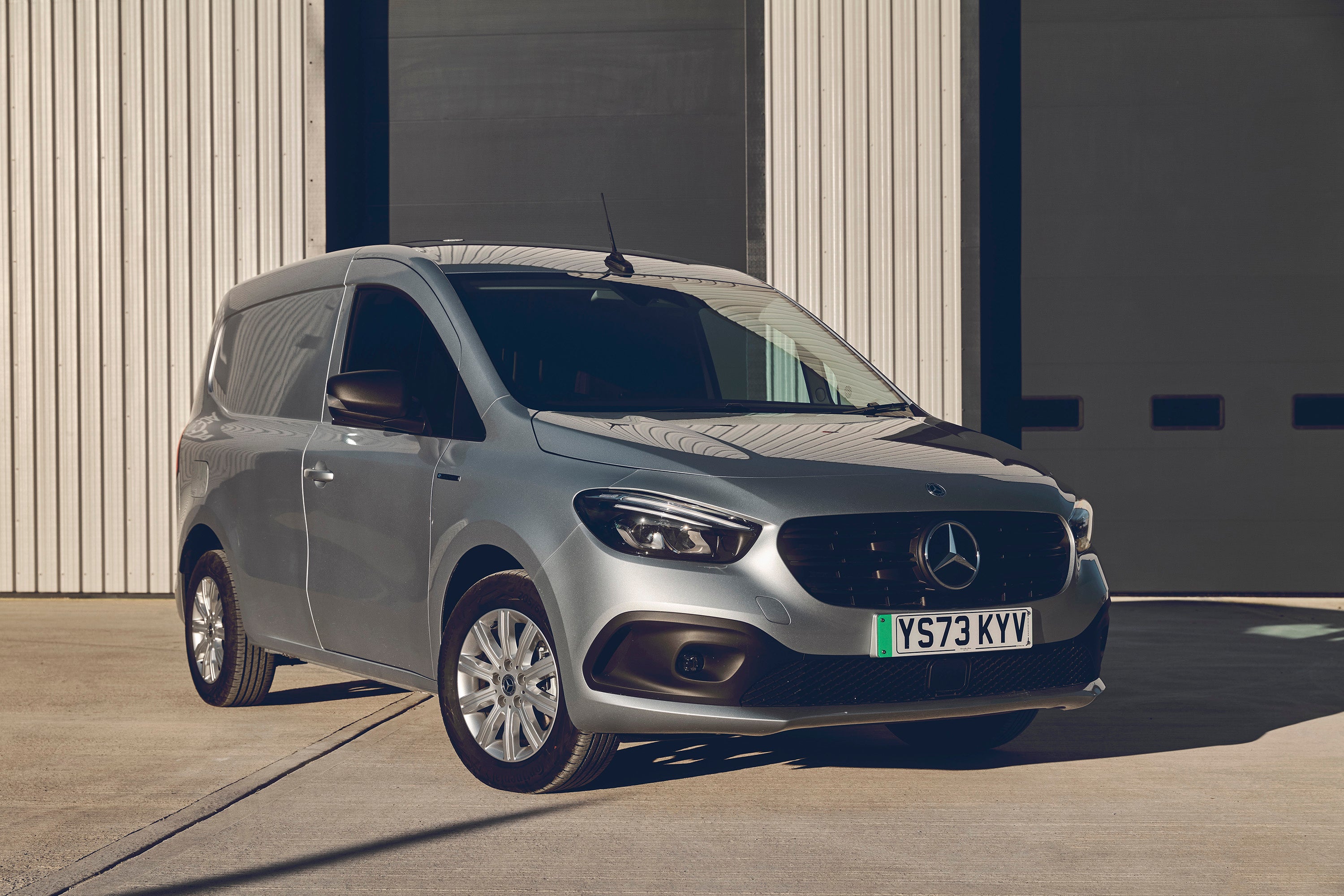Mercedes-Benz Citan Review 2025: Price, specs & boot space
Written by Matt Robinson
Quick overview
Pros
- Top-notch interior quality
- Lots of safety features
- Drives well
Cons
- Rivals can carry more
- Only one engine option
- Can’t load through bulkhead
Overall verdict on the Mercedes-Benz Citan
“The second-generation Mercedes-Benz Citan represents a significant leap forward from its predecessor, with a premium interior lifted from Mercedes’ passenger cars, and a very comfortable driving experience. It does have some practical limitations though, including a load space and payload capacity that’s smaller than its rivals. There’s no through-load bulkhead either, which limits its appeal to some users. Despite these quibbles, however, the Citan is a very solid small van especially if you prioritise quality and comfort."

After the successful introduction of the Mercedes-Benz Citan panel van in 2013, the second-generation model arrived in 2023 and moved things on considerably. The first Citan was heavily based on the Renault Kangoo, and while the latest model also shares the same underpinnings as the latest Renault van, the Citan’s development has seen far more direct involvement from Mercedes. The result is a vehicle that feels much closer to the brand’s premium cars, in terms of both design and the driving experience.
Both L1 and L2 sizes of Citan are available, and an electric version of the Citan is available, called the eCitan, which we've covered here as well. That leaves a single diesel engine option, which is strong enough but rivals give you more choice. You’ll also get more space from rivals, too, and the 662kg maximum payload is low compared to the 1000kg that other small vans can haul.
As well as the Kangoo, the Citan competes with other small vans like the Ford Transit Connect and the Volkswagen Caddy Cargo, as well as the likes of the Citroen Berlingo, Peugeot Partner and the Vauxhall Combo Cargo. While you’ll pay a premium for the Citan, that extra gives you a high level of equipment included as standard, and a quality interior that sets it apart from many of its rivals.
Looking for a used car for sale? We've got 1000s of Mercedes-Benz Approved Used Cars for Sale for you to choose from, including a wide range of Mercedes-Benz Citan vans for sale. If you're looking for the older version, you need our Mercedes-Benz Citan (2013-2020) review.
Is the Mercedes-Benz Citan right for you?
If your priorities are comfort, lots of features and a comfortable drive, mostly around town rather than covering long distances, then the Mercedes Citan could be right up your street. However, if maximum space and payload are particularly important to you then there are other vans available that fit the bill, and the lack of extra engine choices means it’s not as well suited to faster motorway driving. The premium price of the Mercedes could be a consideration too, as there are more affordable alternatives. But that said, the Citan is well-equipped in terms of features, and the build quality reflects the extra cash, too.
What’s the best Mercedes-Benz Citan model/engine to choose?
The Mercedes Citan is available as an L1 or L2 panel van and currently has only one diesel engine, which is labelled the 110 CDI and has 95PS, mated to a six-speed manual gearbox or a seven-speed automatic. Other engines are available overseas but not in the UK at the time of writing, but there is also an all-electric eCitan available in both the L1 and L2 sizes, which could be a good option if you're able to charge at home and if your journeys tend to be local ones.
Your choices in trim are between the entry-level Progressive model or the Premium. Equipment levels are fairly similar between the two – the Premium’s extras are mainly cosmetic, with body-coloured bumpers, alloy wheels and LED headlights. Whether that’s worth the extra cash (just under £2,000 when new) depends on how you’ll use the van.
What other vans are similar to the Mercedes-Benz Citan?
Those considering the Mercedes-Benz Citan will likely want to consider its close rivals. These include the Ford Transit Connect and the Volkswagen Caddy Cargo, which both offer larger load spaces and higher payload capacities. There’s also the Stellantis range of small vans – the Citroen Berlingo, Peugeot Partner and Vauxhall Combo Cargo – all of which are based on the same platform, and again offer more space. None look or feel as premium as the Citan, however.
Comfort and design: Mercedes-Benz Citan interior
"The premium interior of the Citan is one of its major selling points. We’ll touch on the quality and finish below, but the design is taken straight from Mercedes’ range of cars, as is the excellent infotainment system."

There’s little sign of the van’s Renault Kangoo roots. In fact, if you didn’t know you were in a van, you could easily think you were in a car. The seats are comfortable and supportive and there’s plenty of adjustment in them.
Quality and finish
Build quality and the material finish in the Citan is very good for a van, although if you’ve experienced the level of quality in Mercedes cars, you’ll find the plastics a few steps harder than in something like an A-Class. It is a working vehicle, after all. But while there’s more of a wipe-clean flavour to the materials, they don’t feel cheap – for this type of vehicle, the Citan feels right at the classy end.
Infotainment: Touchscreen, USB, nav and stereo in the Mercedes-Benz Citan
Like Mercedes cars, the Mercedes-Benz Citan comes with the MBUX infotainment system, which is one of the best on the market. Apple CarPlay and Android Auto are both included for smartphone connectivity, DAB radio is built-in and wireless device charging is available as an option. A reversing camera is standard as well, as are realr parking sensors.
About the only downside of the system is that the icons on the fairly small screen can be tricky to touch on the move. However, there are some shortcut buttons under the screen to jump between different features.
Space and practicality: Mercedes-Benz Citan cargo space
The cabin of the Mercedes Citan is very well thought out, with lots of spaces and places for storing odds and ends. There’s a pair of cup holders between the seats and a small storage tray ahead of that – space freed up by the mounting of the gear lever in the middle of the dashboard. Another large space can be found under the central armrest and there’s a big shelf in the ceiling in which to keep all manner of larger items. The door bins are easily large enough for a drinks bottle and there’s a reasonable glove box, too.
In the back, you’ve got 2.9 cubic metres of space in the L1 model and 3.6 cubic metres in the L2. That’s the same as in the SWB and LWB Ford Transit Connects, but the standard Volkswagen Caddy Cargo will give you 3.1 cubic metres. Asymmetric rear double doors and a sliding door on the left are standard, with a right-hand sliding door optional. Unlike some rivals, there’s no hatch in the bulkhead to load through longer items. That means a maximum load length of 1806mm in the L1 and 2170mm in the L2.
Payloads vary slightly by trim, but the L1 will manage up to 657kg and the L2 up to 661kg. To compare to a couple of rivals, the Caddy Cargo and Transit Connect can manage up to 718kg, while the likes of the Citroen Berlingo will haul up to 950kg.
The L1 eCitan can't carry as much as its diesel counterpart, managing a more modest 544kg. The L2 version actually manages a bit more than the equivalent combustion Citan, though, at 722kg.
Handling and ride quality: What is the Mercedes-Benz Citan like to drive?
"The Mercedes Citan delivers a comfortable and relatively engaging driving experience. The suspension setup strikes a balance between comfort and handling and the steering is light enough for easy manoeuvring in town, helped by a tight turning circle. At higher speeds the steering lacks feel but doesn’t hinder progress."

The diesel engine doesn’t have a huge amount of power at 95PS, but the 260Nm of torque is available at just 1750rpm, hauling you along at a reasonable pace. We’ve not had a chance to try a fully loaded Citan, but we never felt like it was particularly sluggish.
We’ve only tried the manual gearbox, which is slick enough to and easy to use, and there’s an automatic version too.
The eCitan feels relaxing and effortless to drive, even feeling pretty brisk off the line. Again, as with the diesel Citan we haven't tried one fully loaded, but given how the car responds empty or with lighter loads, we don't think it'll ever feel like it's struggling. The lack of gears also means there's less to think about, while trundling along in traffic is a lot easier.
It's a lot heavier than the diesel, tipping the scales around 1,800kg, compared to around 1,500kg for the combustion model. It doesn't necessarily feel that heavy, though, probably due to the batteries sitting quite low in the van's structure. This keeps the centre of gravity low, meaning the eCitan feels reasonably agile.
What engines and gearboxes/batteries and motors are available in the Mercedes-Benz Citan?
The Citan’s sole engine option is badged as the 110 CDI, a diesel unit which develops 95PS and comes with a six-speed manual gearbox or a seven-speed automatic. Depending on the trim, gearbox and size of body, you’ll get up to 53.3mpg according to official figures. CO2 emissions are between 140 and 144g/km.
The electric eCitan uses a 45kWh battery and a single electric motor which powers the front axle. It's more powerful than the diesel, putting out 122PS, but that's offset by a higher weight figure.
Mercedes eCitan range: How far can you travel on a charge?
With a modest 45kWh battery pack, the eCitan can't go all that far on a full charge. The official electric range figure is 174 miles, dropping to 167 miles for the long-wheelbase version. Lab-obtained figures like these are nigh-on impossible to replicate in real life, but the eCitan did reasonably well in terms of efficiency when we tested it, averaging three miles per kWh despite it being a cold time of year and us covering a lot of ground on dual carriageways at 70mph.
EVs don't tend to do so well at such speeds, so a greater emphasis on urban driving should increase that efficiency figure. As it is, three miles per kWh equates to just over 130 miles on a full charge. This may not sound particularly impressive, but it's broadly similar to many electric vans of this size, and more than enough for typical uses for such a vehicle, for instance local deliveries.
Refinement and noise levels
While the diesel engine can be gruff when revved hard, as a general rule the Citan is well-refined, with minimal road and wind noise thanks to its solid build and sound insulation. In the eCitan there's no engine to drown out external noises, but even so, the sense of insulation from the outside world remains good as far as vans go. You get a faint whirr from the motor during heavier throttle inputs, but unless you have the stereo turned off, it's barely audible.
Safety equipment: How safe is the Mercedes-Benz Citan?
Safety organisation Euro NCAP tested the Citan Tourer, which is the passenger version of the Citan panel van, in 2022, and gave it the maximum five-star rating. The panel van comes with an impressive array of safety features as standard, including six airbags, automatic emergency braking, a blind-spot warning system and adaptive cruise control. It’s a very decent list of systems for this type of vehicle.
MPG and fuel costs: What does a Mercedes-Benz Citan cost to run?
"With a single diesel engine available, the Mercedes Citan promises up to 54.3mpg according to official figures."

The real-world fuel economy will depend on where it’s driven and the payload. CO2 emissions are 137g/km.
Mercedes eCitan charging times: How much does it cost to charge?
It's not recommended to regularly charge an EV from a domestic three-pin socket for various reasons (one being that it isn't great for your home's electrics), but if you do so, it'd take nearly 20 hours to fully 'brim' the eCitan from empty.
Most owners will use a wallbox at home, with the higher output of these devices (typically 7.4kW) allowing for a full charge of the eCitan's battery in a much more reasonable six hours. Either method of at-home charging will cost you around £11 based on the current average per kWh cost of electricity, but if you have a lower tariff at certain times of day, it could be possible to drastically reduce that figure.
The eCitan has a lower fast charging capacity than some rivals, with a cap of 75kW. Even so, you shouldn't have to wait too long at a public charger to get the range you need, with a 10 to 80% top-up taking 38 minutes according to Mercedes.
One particularly neat touch with the eCitan, as also seen on some other Mercedes-Benz vans, the charge port is hidden behind the brand's three-pointed star logo on the front grille.
Mercedes-Benz Citan reliability and warranty
The latest Mercedes Citan is too new for us to have any meaningful reliability data. Generally, however, Mercedes vans have a good reputation for reliability, so our hopes are high that the Citan will continue that.
The electric eCitan has fewer moving parts than the diesel-powered models, in theory meaning there's less to go wrong. Also, Mercedes offers a warranty on the battery which can be called into action if the capacity falls below 70 per cent within eight years or 100,000 miles of driving, whichever comes first.
Mercedes-Benz Citan insurance groups and costs
Depending on the model, the Mercedes Citan sits between insurance groups 27 and 31 of 50, which is slightly higher than the Renault Kangoo but not massively so.
VED car tax: What is the annual road tax on a Mercedes-Benz Citan?
As a light goods vehicle, the Mercedes Citan is subject to the standard flat rate of Vehicle Excise Duty (VED), which is currently £335 a year.
Having long been exempt from VED, as with other electric vans, from 1 April 2025 the eCitan will be liable to the same flat rates as the combustion-powered Citan and other light goods vehicles noted above.
Mercedes-Benz Citan price
"The Mercedes-Benz Citan starts at £21,575, but if you want the electric eCitan, you'll need to pay well over £10k more."

£21,575 gets you into a Citan L1 Base, and for the long wheelbase L2 Base it's £22,920. It's £23,365 or £24,710 for a Pro depending on whether you want the L1 or L2, while an L1 Select is £25,300 and an L2 Select £26,645.
The eCitan is considerably more expensive than the diesel version. The cheapest is the eCitan L1 Base at £32,700, while the long wheelbase L2 Base comes in at £33,890. It's £35,000 or £36,190 if you want a Pro in either L1 or L2 form, while a Select is £36,940 for an L1 and £38,130 for an L2.
There are substantial savings to be had on the used market, though, with little used eCitans coming in at similar prices to new, low-spec diesel models.
Trim levels and standard equipment
The latest Mercedes Citan comes in three trims: Base, Pro and Select. Even the base version gets Mercedes-Benz's 9.5-inch MBUX infotainment system, plus electric windows, a reversing camera, cruise control, lane keeping assistance.
The Pro builds on this with 16-inch alloy wheels, heated electric mirrors, front fog lamps, LED load compartment lighting, traffic sign recognition, blind spot assistance and hill start assist.
The range-topping Select is the smartest looking of the bunch thanks to teh use of body-coloured bumpers. You also get some additional equipment including LED interior lighting, LED headlights, keyless entry and start, a leather steering wheel and some extra safety tech.
Ask the heycar experts: common questions
Is the Mercedes-Benz Citan a Renault Kangoo?
Is the Mercedes-Benz Citan a good van?
How practical is the Mercedes-Benz Citan?
Get our latest advice, news and offers
Keep me updated by email with the latest advice, news and offers from heycar.
By submitting you agree to our privacy policy





